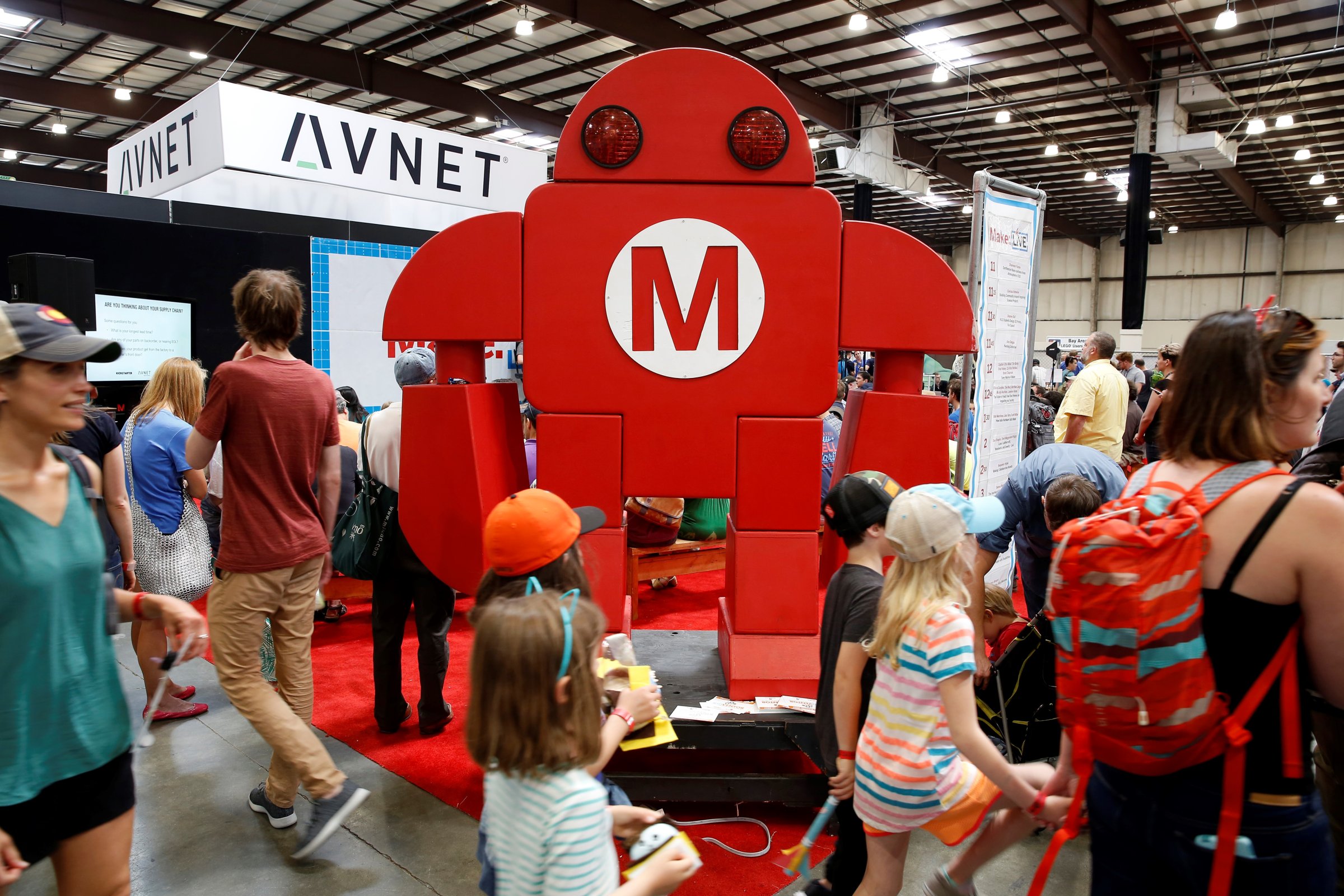
This past month — and for the fourth year in a row — I visited California’s San Mateo County Event Center for the granddaddy of Maker Faire events, a celebration of home-baked technology projects and DIY attitudes. Over 125,000 people visited the Maker Faire to check out all kinds of creations, share ideas and get inspired to build something themselves.
The Maker Movement started a little over a decade ago, with a heavy focus on fields like robotics, circuitry and computer hardware. But over time — and in part thanks to Maker Faire events and Maker Magazine — the movement gained steam and diversity. Today, makers are creating everything from robot cars to quilts and fresh honey.
At this year’s show, crowds were treated to swimming drones, a robotic giraffe, and even an all-electric Porsche 911. Microsoft’s booth was packed with kids learning how to code. Virtual reality had a big presence, with Microsoft and HTC both demoing their respective technologies. And Google’s “soldering booth,” meanwhile, was a big hit with the kids in attendance, as were the drone races.
Maker Faire events have drawn lots of attention from big technology companies, including Intel, Microsoft, Google and others. And for good reason: Many of their employees of the future may get their first taste of tech at these events — kids who attend Maker Faires may be inspired to become tomorrow’s scientists, engineers, programmers and more.
What I wrote about Maker Faires last year holds true today:
“The Maker Faires’ true importance lies in its focus on getting kids interested in making things. Over the last few years, I have written multiple pieces on STEM focusing on how companies around the world are backing STEM-based programs. All of them see how important these disciplines will be in the future. Still more germane to them is the real concern that if we cannot get kids trained in the sciences, we will not have the engineers and scientists to run our companies in the future.”
Although the Maker Faire delights people of all ages, it’s the kids who show the greatest enthusiasm and joy as they go from booth to booth. What makes the Maker Faire so unique is that it presents technology in a hands-on way, with less focus on the math and science behind what’s happening. And while Maker Faire events certainly attract plenty of boys, I see more girls — and a more diverse crowd in general — every year, a good sign for technology’s future.
While it’s certainly fun and educational, there’s a more important reason for the Maker Faire to exist. For many of the kids in attendance, it’s a great introduction to Science, Technology, Engineering and Math, or STEM (You could also add art, for STEAM). These will be vital skills for today’s kids moving forward as technology will continue to impact every kind of career path. For many of them, the Maker Faire could be the catalyst that steers them towards the jobs of the future.
Tim Bajarin is recognized as one of the leading industry consultants, analysts and futurists, covering the field of personal computers and consumer technology. Mr. Bajarin is the President of Creative Strategies, Inc and has been with the company since 1981 where he has served as a consultant providing analysis to most of the leading hardware and software vendors in the industry.
More Must-Reads from TIME
- Why Biden Dropped Out
- Ukraine’s Plan to Survive Trump
- The Rise of a New Kind of Parenting Guru
- The Chaos and Commotion of the RNC in Photos
- Why We All Have a Stake in Twisters’ Success
- 8 Eating Habits That Actually Improve Your Sleep
- Welcome to the Noah Lyles Olympics
- Get Our Paris Olympics Newsletter in Your Inbox
Contact us at letters@time.com